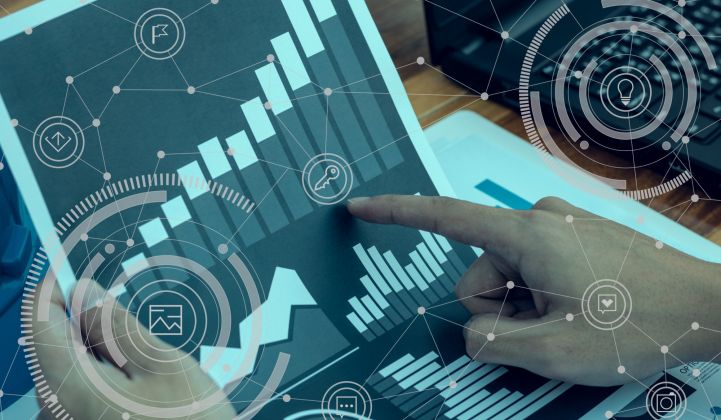The spread of distributed energy resources (DERs) is driving the creation of new analytics and IT ecosystems for utilities. These ecosystems have become critical for utilities looking to enable broad range of functions from data management to DER planning.
The first wave of data and analytics was enabled through the deployment of advanced metering infrastructure (AMI) and utility-owned grid hardware. Today, utility analytics is evolving from internal performance optimization into a new stage. According to GTM Research’s Grid Edge Customer Utility Analytics Ecosystems report, this new stage will leverage both utility- and customer-owned internet-of-things (IOT) technologies to drive competitive advantage and achieve cost savings.
FIGURE: Evolutionary Analytics Journey

Source: Grid Edge Customer Utility Analytics Ecosystems report, GTM Research
Several information and operational technologies are driving the advancement of internal customer analytics and external customer experience in the utility industry. These technologies include platform-as-a-service ecosystems, large back-office IT systems, and IOT devices, which can include utility-owned AMI or sensors, customer-owned equipment and smart home devices.
These technologies are part of three key market segments: AMI, utility back office and grid edge customer analytics. The GTM Research report provides a detailed assessment of these segments and analyzes the progression of available analytics solutions, the depth of utility adoption, and the market share of technology vendors. GTM Research estimates $4 billion will be spent across these three markets in North America in 2017, with an additional $16 billion to be spent over the next four years.
In the nascent stages of analytics implementation, utilities typically begin with an ad-hoc approach to develop practices that apply data to generate value. Timotej Gavrilovic, the author of the report, noted that once utilities have established methods to use the data, they often begin to rely on vendors to manage and integrate growing analytics ecosystems or develop specialized solutions.
FIGURE: Digital Customer Ecosystem

Source: Grid Edge Customer Utility Analytics Ecosystems, GTM Research
Over 160 mergers and acquisitions totaling more than $28 billion in value have occurred since 2010 across AMI, customer analytics and back-office solution providers. “In the last few years, many energy-efficiency engagement, revenue assurance and outage communications vendors have either been purchased or merged with large integrated solutions providers,” said Gavrilovic.
Vendors have used these acquisitions to integrate new functionality and lower the complexity associated with project delivery. Critical operational analytics center on a familiar customer touch point -- the energy bill. More ambitious customer programs include energy efficiency programs and DER marketplaces. (Learn more about DER marketplaces here.)
Because “energy-efficiency engagement and DER marketplaces both require complex analytics and provide customers with timely, actionable data, both of these use cases are supporting the growth of the internet-of-things landscape, promoting the deployment of more utility- and customer-connected devices and energy resources on to the grid,” said Gavrilovic.
“Energy data and its related analytics have so much potential to transform data to deliver insights that benefit utilities and customers that capabilities will continue to evolve," he added. "Partnerships will be critical to growing these capabilities, but so will customer participation. But at the same time, increased customer engagement in programs will create new layers of data complexity."
***
Find more on the report here. The report includes in-depth market coverage, a vendor landscape, case studies and forecasts.
The report is part of GTM Research's Grid Edge Service. The Grid Edge Service provides comprehensive coverage of the technologies, regulation and business models advancing the transition toward a distributed and transactive electric grid.




